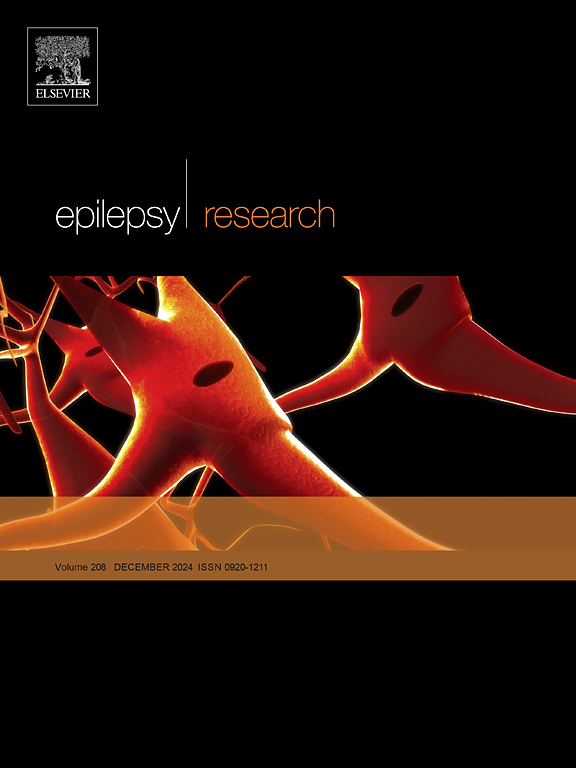硫酸镁治疗小儿癫痫痉挛综合征的疗效和耐受性:系统回顾和荟萃分析
IF 2
4区 医学
Q3 CLINICAL NEUROLOGY
引用次数: 0
摘要
几项试验和临床研究探讨了硫酸镁(MgSO₄)治疗婴儿癫痫痉挛综合征(IESS)的有效性和安全性。然而,还没有进行系统的评价来综合现有的证据。方法本系统评价旨在评价硫酸镁治疗IESS患儿的有效性和安全性。主要结局包括实现痉挛自由的患者比例、痉挛次数的良好反应(定义为每日痉挛减少至少50% %)、低心律失常的缓解、发育商的改善以及不良事件的性质和频率。此外,我们比较了不同时间点ACTH+ mgso4联合治疗和ACTH单药治疗之间的这些变量。我们纳入了所有的对照和非对照试验,以及前瞻性和回顾性队列研究。结果共纳入4项研究,1334例IESS患者。促肾上腺皮质激素(ACTH)+MgSO₄组在每日痉挛频率、痉挛自由度、心律失常缓解和脑电图正常化方面取得良好反应的患者比例高于ACTH单药治疗组(RR=1.22, 95 % CI: 1.09-1.36, I²=0 %,p = 0.0004;RR = 1.44, 95 % CI: 1.24 - -1.67,我²= 29 % p & lt; 0.00001;RR = 1.27, 95 % CI: 1.15 - -1.41,我²= 0 % p & lt; 0.00001;和RR = 1.46, 95 % CI: 1.06 - -2.02,我²= 0 %,分别为p = 0.02)。发生治疗后出现的不良事件和严重不良事件的患者比例在ACTH+MgSO₄和ACTH单药治疗组之间具有可比性(RR=0.55, 95 % CI: 0.28-1.07, I²=49 %,p = 0.08;和RR = 1.15, 95 % CI: 0.74 - -1.79,我²= 0 %,分别为p = 0.54)。然而,与ACTH单药组相比,ACTH+MgSO₄组高血压发生率明显降低(RR=0.11, 95 % CI: 0.03-0.34, I²=0 %,p = 0.0002)。结论ACTH联合硫酸镁治疗对IESS患儿癫痫发作的控制效果优于单药治疗。此外,它还与某些不良事件(如高血压)的风险降低有关。本文章由计算机程序翻译,如有差异,请以英文原文为准。
Efficacy and tolerability of magnesium sulfate in children with infantile epileptic spasms syndrome: A systematic review and meta-analysis
Background
Several trials and clinical studies have explored the efficacy and safety of magnesium sulfate (MgSO₄) in children with infantile epileptic spasms syndrome (IESS). However, no systematic review has been conducted to synthesize the available evidence.
Methods
This systematic review aimed to assess the efficacy and safety of MgSO₄ in children with IESS. The primary outcomes included the proportion of patients achieving spasm freedom, a favorable response in the number of spasms (defined as at least a 50 % reduction in daily spasms), resolution of hypsarrhythmia, improvement in developmental quotient, and the nature and frequency of adverse events. Additionally, we compared these variables between the ACTH+MgSO₄ combination therapy and ACTH monotherapy at various time points. We included all controlled and uncontrolled trials, as well as prospective and retrospective cohort studies.
Results
A total of four studies involving 1334 IESS patients were identified. The proportion of patients achieving a favorable response in daily spasm frequency, spasm freedom, hypsarrhythmia resolution, and EEG normalization was higher in the adrenocorticotropic hormone (ACTH)+MgSO₄ group than in the ACTH monotherapy group (RR=1.22, 95 % CI: 1.09–1.36, I²=0 %, p = 0.0004; RR=1.44, 95 % CI: 1.24–1.67, I²=29 %, p < 0.00001; RR=1.27, 95 % CI: 1.15–1.41, I²=0 %, p < 0.00001; and RR=1.46, 95 % CI: 1.06–2.02, I²=0 %, p = 0.02, respectively). The proportion of patients experiencing treatment-emergent adverse events and serious adverse events was comparable between the ACTH+MgSO₄ and ACTH monotherapy groups (RR=0.55, 95 % CI: 0.28–1.07, I²=49 %, p = 0.08; and RR=1.15, 95 % CI: 0.74–1.79, I²=0 %, p = 0.54, respectively). However, the frequency of hypertension was significantly lower in the ACTH+MgSO₄ group compared to the ACTH monotherapy group (RR=0.11, 95 % CI: 0.03–0.34, I²=0 %, p = 0.0002).
Conclusions
The combination of ACTH and MgSO₄ is more effective than ACTH monotherapy in achieving seizure control in children with IESS. Additionally, it is associated with a reduced risk of certain adverse events, such as hypertension.
求助全文
通过发布文献求助,成功后即可免费获取论文全文。
去求助
来源期刊

Epilepsy Research
医学-临床神经学
CiteScore
0.10
自引率
4.50%
发文量
143
审稿时长
62 days
期刊介绍:
Epilepsy Research provides for publication of high quality articles in both basic and clinical epilepsy research, with a special emphasis on translational research that ultimately relates to epilepsy as a human condition. The journal is intended to provide a forum for reporting the best and most rigorous epilepsy research from all disciplines ranging from biophysics and molecular biology to epidemiological and psychosocial research. As such the journal will publish original papers relevant to epilepsy from any scientific discipline and also studies of a multidisciplinary nature. Clinical and experimental research papers adopting fresh conceptual approaches to the study of epilepsy and its treatment are encouraged. The overriding criteria for publication are novelty, significant clinical or experimental relevance, and interest to a multidisciplinary audience in the broad arena of epilepsy. Review articles focused on any topic of epilepsy research will also be considered, but only if they present an exceptionally clear synthesis of current knowledge and future directions of a research area, based on a critical assessment of the available data or on hypotheses that are likely to stimulate more critical thinking and further advances in an area of epilepsy research.
 求助内容:
求助内容: 应助结果提醒方式:
应助结果提醒方式:


